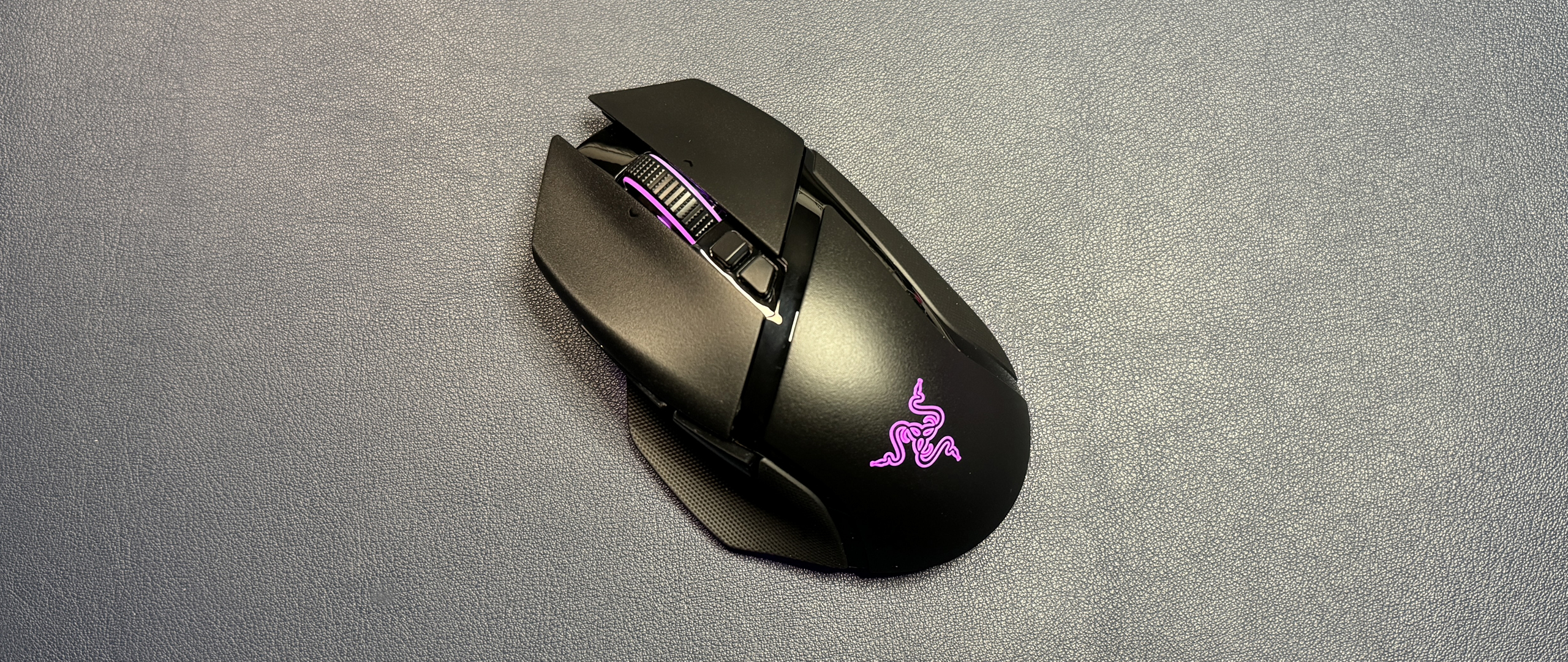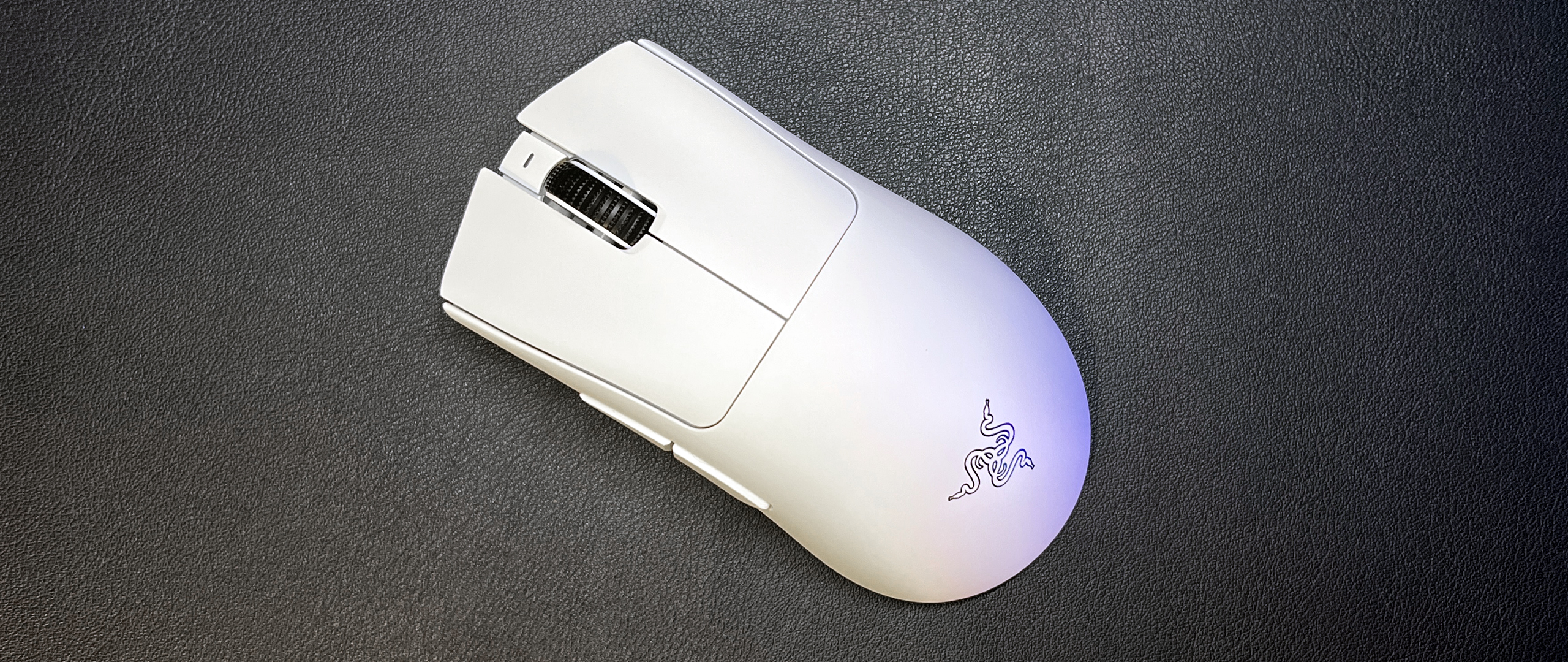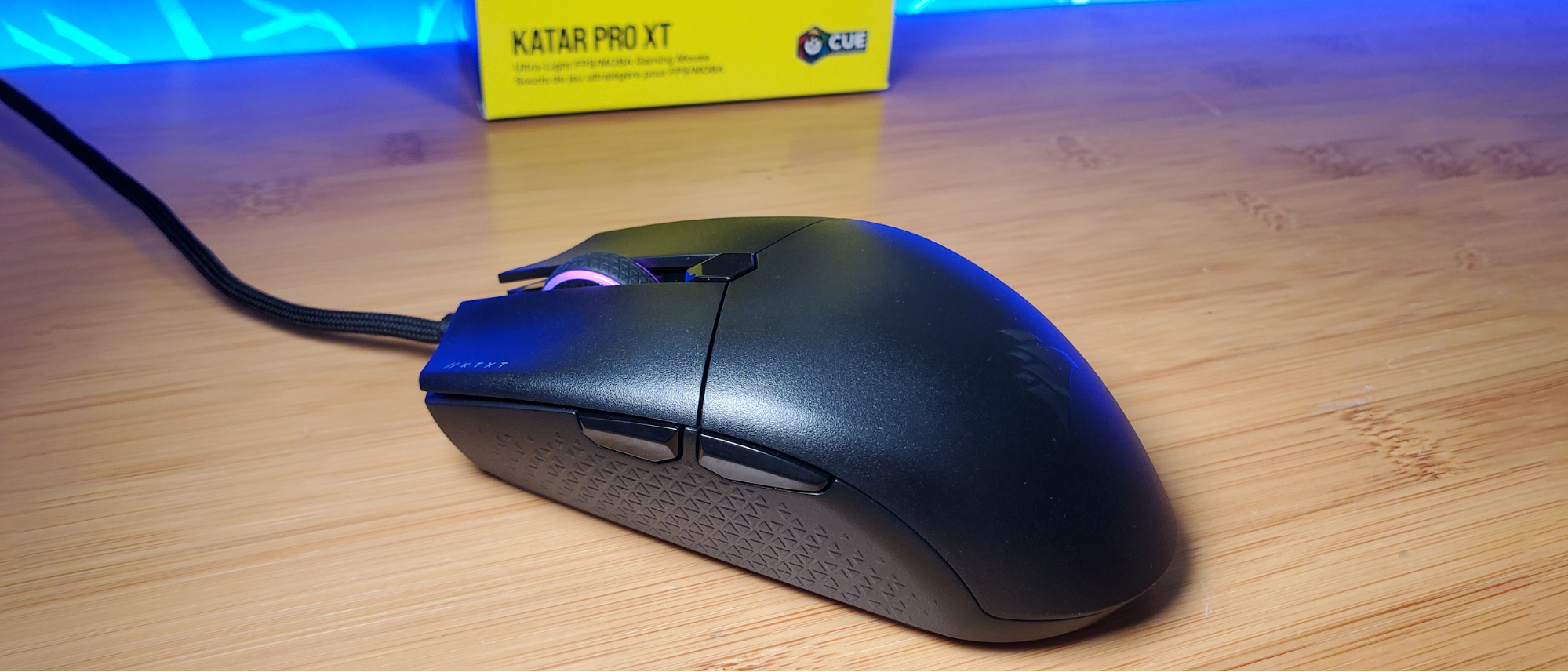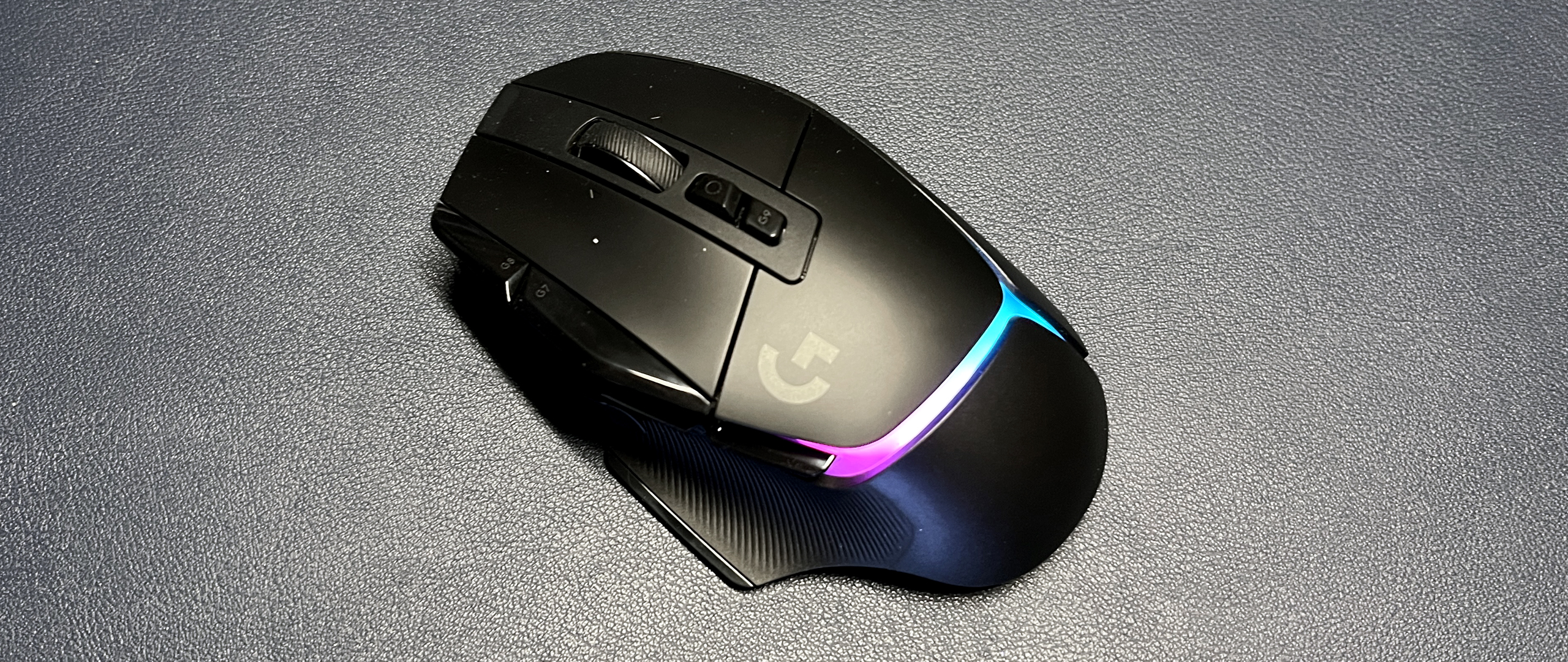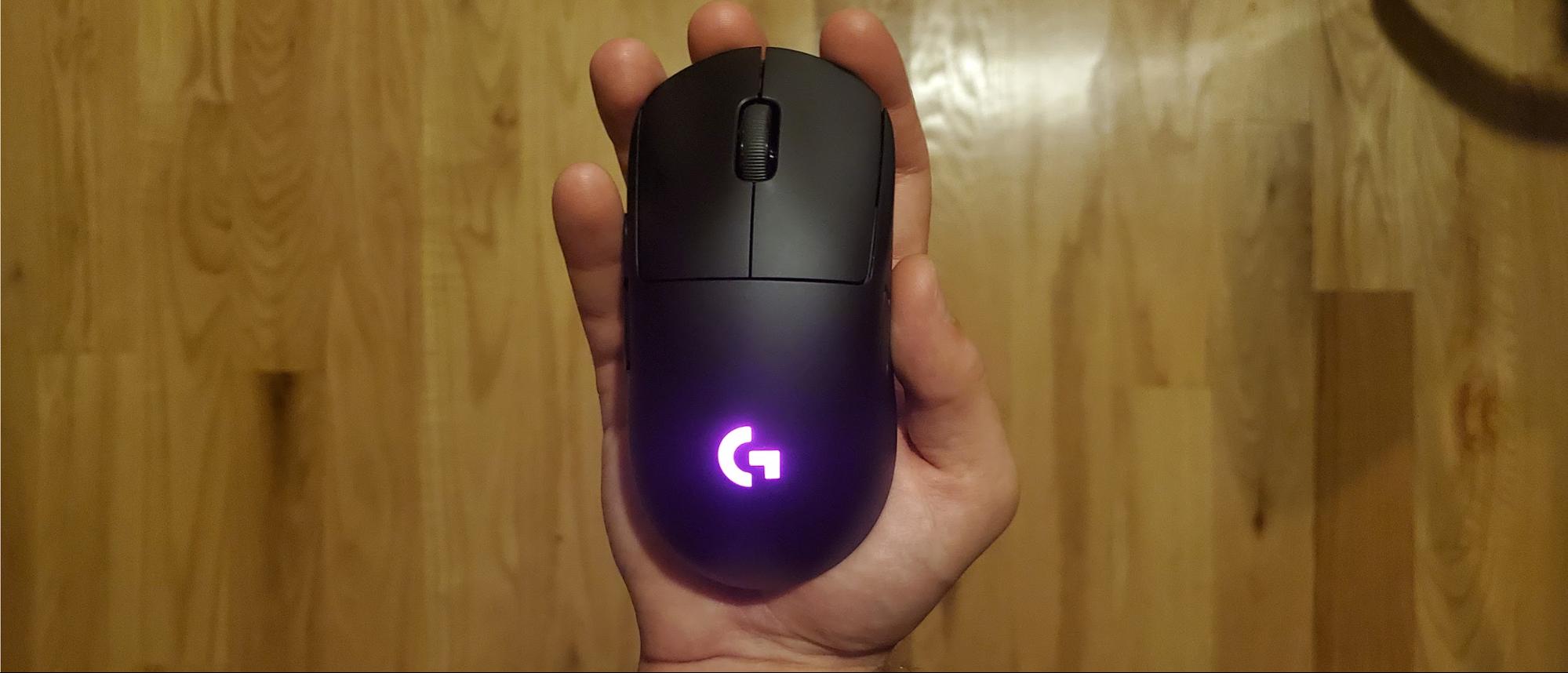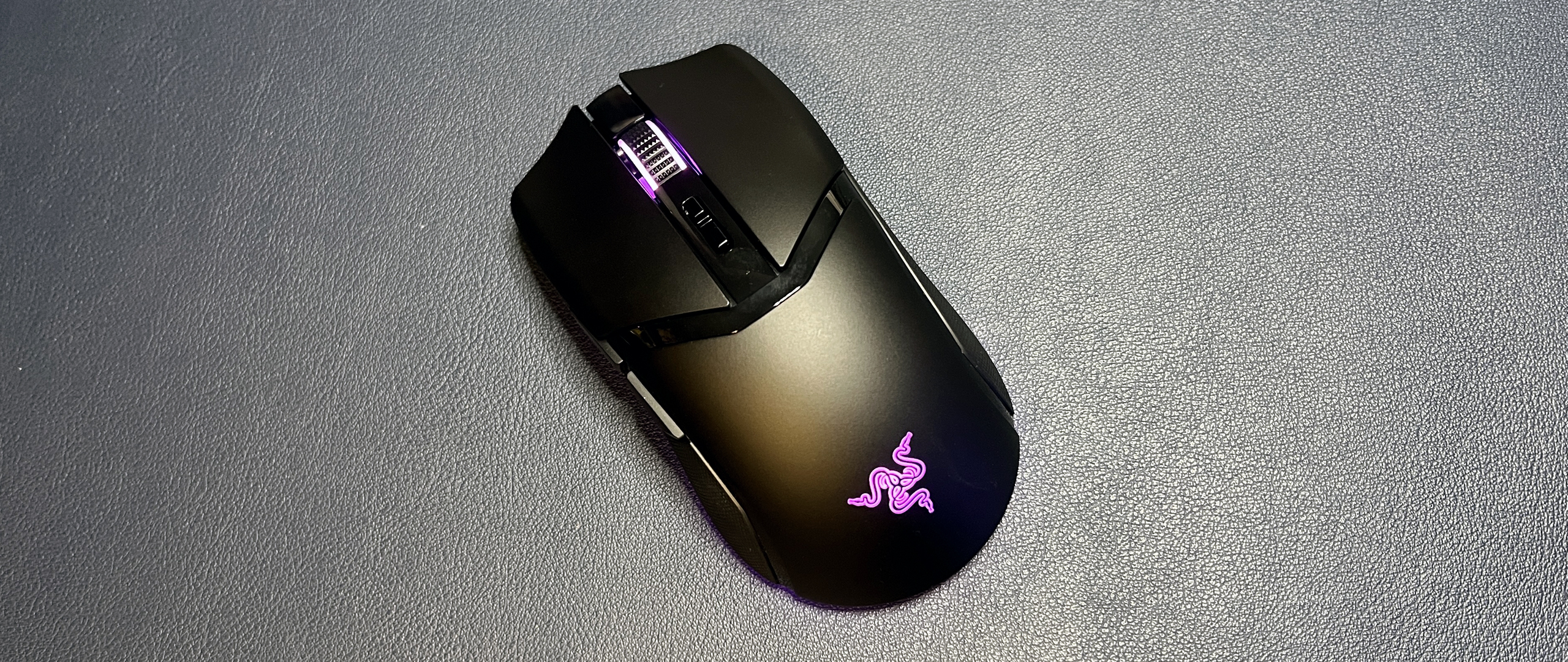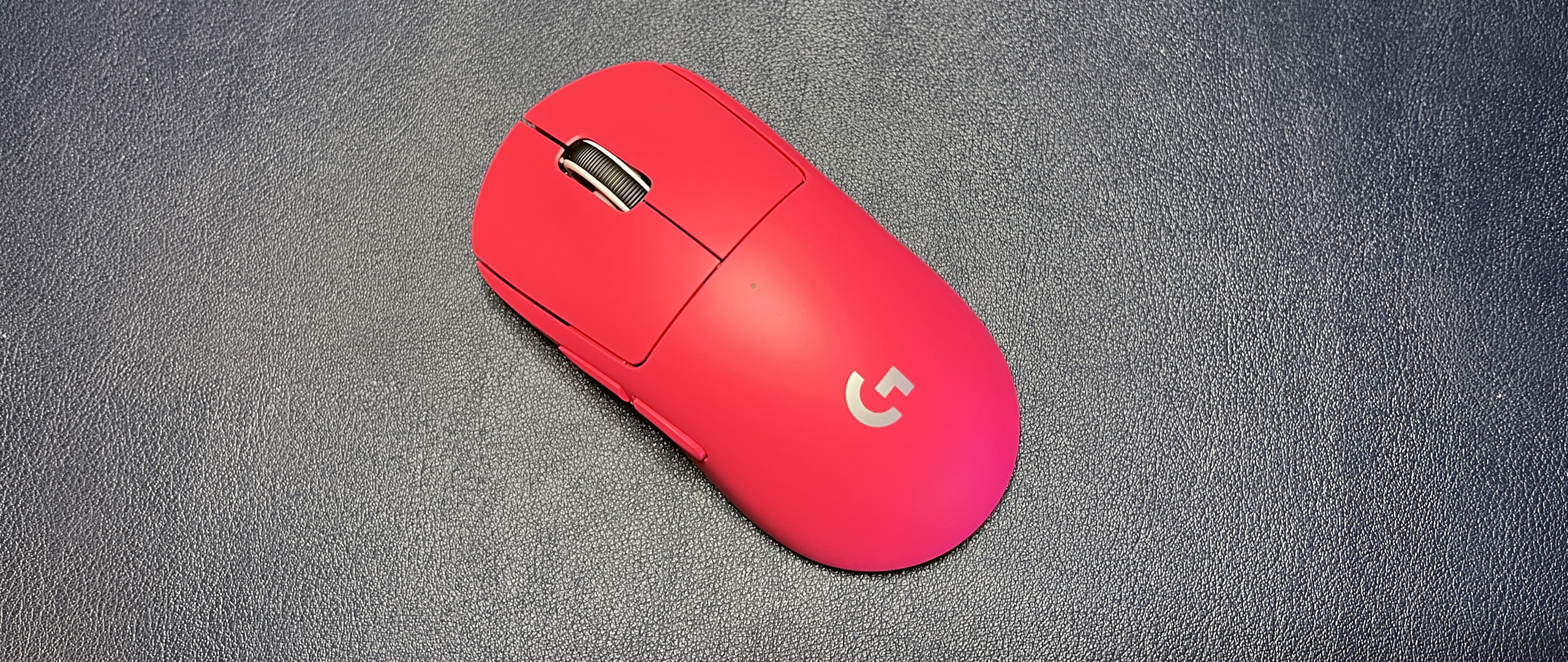Best Gaming Mouse 2025
Find the perfect mouse to dominate — whether you're playing Overwatch 2 or Minesweeper.
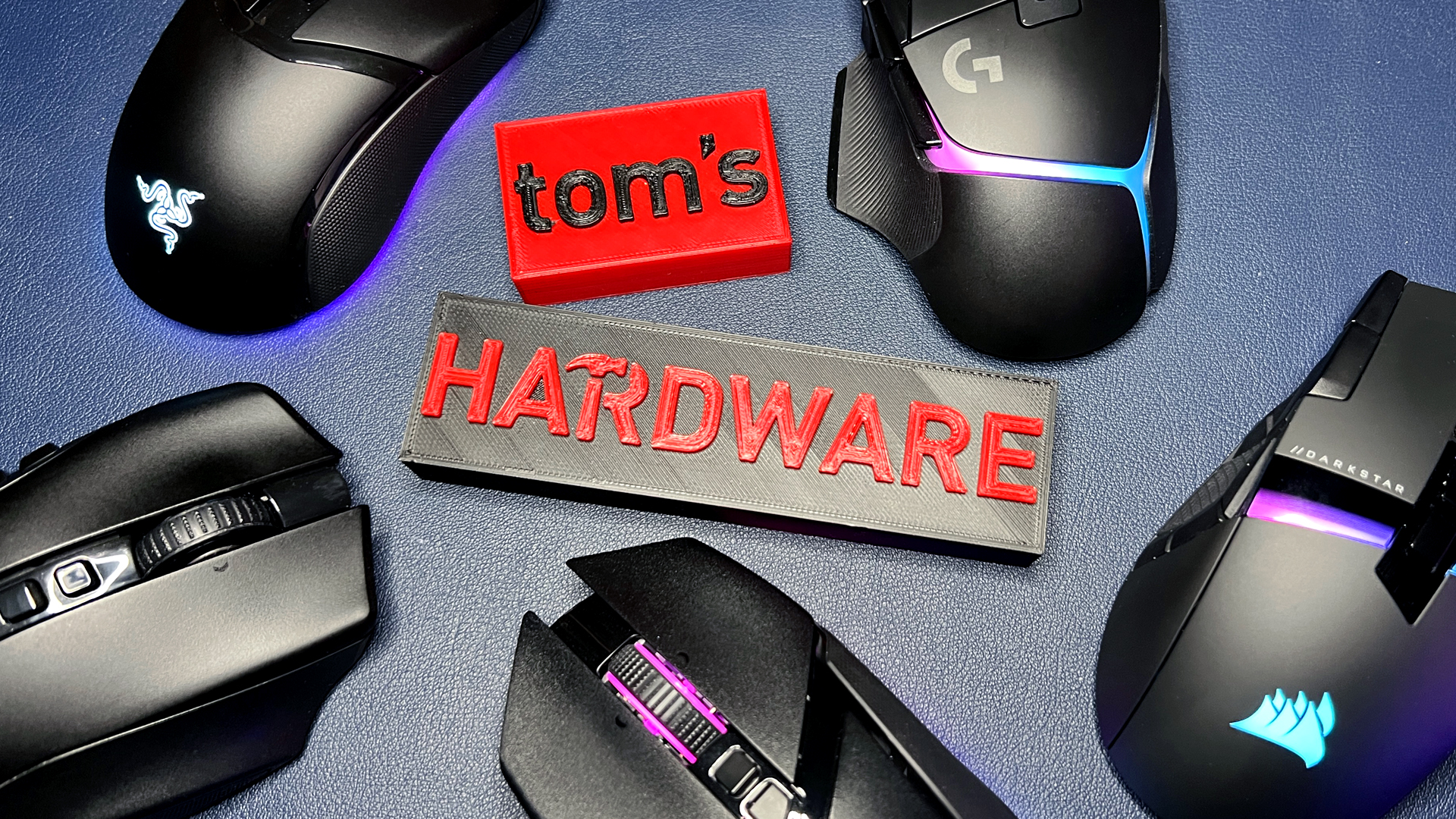
The perfect gaming mouse will fit your hand and grip-style so perfectly, you'll forget you're even using a mouse. It will glide effortlessly across any surface you choose to play on; it will have intuitively-placed, tactile buttons; and it will be perfectly accurate and sensitive with near-zero latency.
Unfortunately, the perfect gaming mouse doesn't exist — or, well, the universally perfect gaming mouse doesn't, anyway. Different games (and different gamers) need different mice. For fast-paced, competitive first-person shooters, you'll want something simple, stripped-down, lightweight, and easy to pick up. For a marathon style MMORPG with 75 different in-game menus, you'll want something with plenty of extra programmable buttons. And if you're the type of person who likes to dabble in multiple genres (and, perhaps, also work — occasionally), you'll want a mouse that lands somewhere in the middle.
We've tested hundreds of gaming mice over the years, and we're here to help you hone in the perfect mouse for your unique style by breaking down the best gaming mice for different uses (and users) below.
This list is for gaming-specific mice; if you're looking for a mouse to help boost your skills in the office, take a look at our list of best wireless mice for productivity.
The Quick List
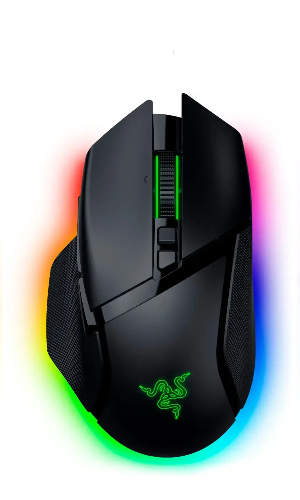
Best Overall
This wireless, all-purpose gaming mouse has a comfortable ergonomic shape, 11 programmable buttons, and features Razer's Focus Pro 35K optical sensor. It also has bright, customizable RGB lighting — the perfect balance of performance, comfort, and aesthetic.

Best Wireless Gaming Mouse
A lightweight, stripped-down wireless gaming mouse with 'next-gen' ergonomics that make it feel like an extension of your arm. The new DeathAdder V4 Pro has the exact same shape and design, but the DeathAdder V3 Pro is a better deal if you can find it on sale.
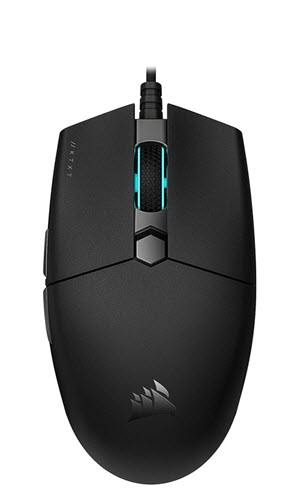
Best Budget Gaming Mouse
This lightweight gaming mouse has a symmetrical shape and a shell that doesn't feel cheap, considering it can usually be found for around $30 on sale.
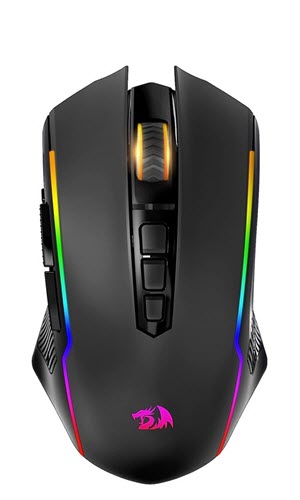
Best Budget Wireless Gaming Mouse
It's not the lightest or the longest-lasting wireless mouse around, but it has a comfortable symmetrical shape, eight programmable buttons, and can usually be found for under $50.
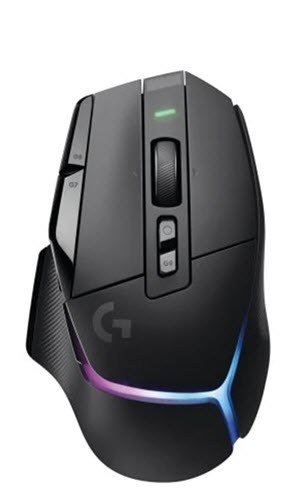
Best RGB Gaming Mouse
This contoured, wireless gaming mouse has 13 programmable buttons, optical-mechanical switches, and the prettiest diffused RGB lighting strip we've seen.
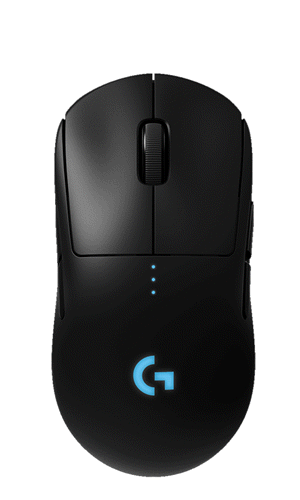
Best Ambidextrous Gaming Mouse
This is one of the only truly ambidextrous gaming mice you'll find — with thumb buttons on both sides. It's also lightweight and wireless, though its battery life is just so-so.
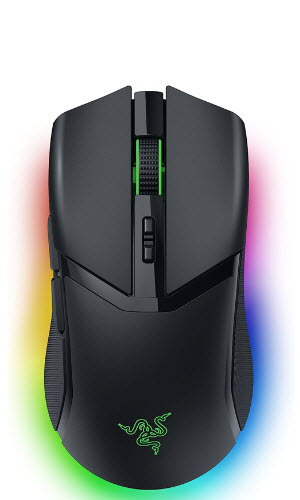
Best Compact Gaming Mouse
It's smaller and lighter than most flagship gaming mice, but it still comes with all the features (and RGB lighting) you're craving.

Best FPS Gaming Mouse
It's almost identical to its predecessor, the Pro X Superlight, but it has an upgraded sensor and a USB-C charging port.
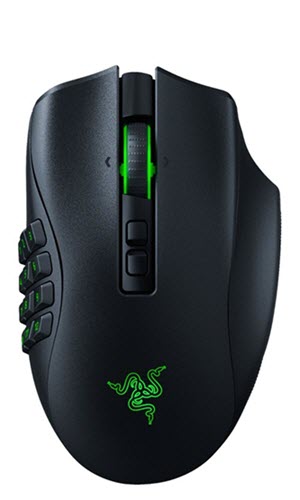
Best MMO Gaming Mouse
This wireless gaming mouse is designed for MMO and MOBA players, but it's also pretty versatile thanks to its three swappable side panels (with two, six, and 12 buttons).
The Best Gaming Mouse You Can Buy Today
Why you can trust Tom's Hardware
Best Gaming Mouse
Specifications
Reasons to buy
Reasons to avoid
There are several versions of the Razer Basilisk V3, including the original wired version, the Basilisk V3 Pro, and the updated Basilisk V3 Pro 35K, and all are great options for a solid, comfortable, all-purpose gaming mouse with excellent performance. The most recent update to the Basilisk line is the Basilisk V3 Pro 35K — the same mouse, but wireless and with Razer's most recent Focus Pro 35K optical sensor, which has a maximum sensitivity of 35,000 DPI, a maximum speed of 750 IPS, and can handle up to 70 G's of force. It also features up to 150 hours of battery life over a 2.4GHz wireless connection (up from the Basilisk V3 Pro's 120 hours).
The Basilisk V3 Pro has a comfortable, right-handed ergonomic shape, with a matte black shell, built-in side grips, and glossy accents. It features 11 programmable buttons and a dual-mode tilt wheel that can switch between tactile and free-spin — this is similar to the dual-mode wheels on Logitech's mice, but Razer's version is software-based, not hardware-based. It is on the larger side for mice, but its nicely-contoured shape means that it should still be comfortable for a range of hand sizes.
Performance-wise, this mouse hits a sweet spot — speedy and responsive, thanks to the Focus Pro 35K optical sensor, and also comfortable and premium-feeling, with enough buttons for those who want to customize a little (but not so many as to be overwhelming). It can also reach up to an 8,000 Hz wireless polling rate with Razer's HyperPolling Wireless Dongle (sold separately, for $30) — but still manages up to a 4,000 Hz wireless polling rate without (which is plenty for the majority of gamers).
Read: Basilisk V3 Pro 35K Review
Best Wireless Gaming Mouse
2. Razer DeathAdder V3 Pro
Our expert review:
Specifications
Reasons to buy
Reasons to avoid
Razer’s DeathAdder V3 Pro sports a subtle-but-significant redesign that makes it lighter, more tactile, and more ergonomic than its predecessor, the DeathAdder V2 Pro. The new V3 Pro weighs just 2.22oz (63g) and features a streamlined silhouette with a split key cover design (instead of the former unibody shell) and five programmable buttons. To get the weight down, Razer stripped the V3 Pro of unnecessary frills, including RGB and Bluetooth — but it was worth it.
The DeathAdder V3 Pro isn't as flashy as a fully-lit RGB-infused gaming mouse, but it has plenty of features packed under its ultra-lightweight hood. The mouse features Razer's Focus Pro 30K Optical sensor, which has a maximum sensitivity of 30,000DPI, a tracking speed of 750 IPS, and up to 70g of acceleration. The sensor tracks seamlessly on a variety of surfaces, including transparent glass.
More importantly, the DeathAdder V3 Pro is the most comfortable, natural-feeling gaming mouse I've ever held. Whatever research Razer did to determine the perfect tweaks to improve this mouse's ergonomics was spot on. It's not the lightest mouse on the market (far from it, actually), but it feels so good that you'll quickly forget you're even holding a mouse. The only caveat I have is that it is on the larger side — it measures 5 inches long and 2.67 inches wide — so it might not feel quite as good if you happen to have smaller hands. But it'll probably still feel pretty good.
The V3 Pro comes with a Razer HyperSpeed 2.4GHz wireless dongle, and is also compatible with Razer’s HyperPolling Wireless Dongle (sold separately for $30 or bundled with the V3 Pro for $165) — which upgrades the V3 Pro’s wireless polling rate to 4,000 Hz (from 1,000 Hz). Using the V3 Pro with the HyperPolling Wireless Dongle does have the downside of dropping the mouse’s impressive 90-hour battery life down to just 24 hours — maybe that’s why Razer doesn’t automatically include it.
Read: Razer DeathAdder V3 Pro Review
Best Budget Gaming Mouse
3. Corsair Katar Pro XT
Our expert review:
Specifications
Reasons to buy
Reasons to avoid
If you want a well-specced, comfortable gaming mouse at an affordable price, the Corsair Katar Pro XT is an excellent option. It's a bit low profile, but it has a nice, ambidextrous shape and a matte plastic shell that doesn't feel cheap. It weighs just 2.68 ounces (73g), so it's easy to quickly adapt to and is perfect for long gaming sessions.
It's a wired mouse, but it glides easily without cable drag thanks to a paracord-covered USB-A tether cable. It features a PMW3391 sensor with a max sensitivity of 18,000 DPI, and it has six programmable buttons, including the clickable scroll wheel. It's programmable via Corsair's iCue software, and it even features a touch of RGB lighting in the scroll wheel.
If you'd rather not be tethered, the wireless version of this mouse, the Corsair Katar Pro Wireless, can often be found on sale for the same price as this wired version. If you're looking for an even lighter wireless mouse, the Corsair Katar Elite Wireless weighs just 2.24 ounces (69g), though you will pay more for the extra ergonomics.
The Katar Pro XT isn’t the flashiest or most unique mouse out there, but it's a reliable $35 gaming companion.
Read: Corsair Katar Pro XT Review
Best Budget Wireless Gaming Mouse
4. Redragon M686 Vampire Elite
Our expert review:
Specifications
Reasons to buy
Reasons to avoid
You might not have heard of Redragon before, but we’re getting more and more acquainted with the Chinese company, which is also on our Best Wireless Keyboards page. The affordable, well-built M686 Vampire Elite is currently just $36 and carries many hallmarks of a premium wireless gaming mouse. This includes 8 programmable buttons and fast USB-C charging. If you’re a gamer whose budget tops out at $50, this may be the best wireless mouse for you.
In a rare move, Redragon included grooves for righties to rest their ring and pinky fingers on this mouse. Many mice neglect those digits, leaving them dragging on the mouse pad. The M686’s shape comfortably serves larger hands and accommodates wide grips.
The M686 has soft, rubber side grips, and the rest of the chassis has a smooth, almost gel-like feel. It’s nice but can lack resistance, especially by the left and right click buttons. The scroll wheel is tactile but still glides pretty smoothly and shows slight wobble, making precise scrolls hard. And you won’t get the same springy feel from the left and right click buttons that pricier wireless gaming mice offer.
The M686’s PixArt PMW3335 sensor goes up to 16,000 DPI, 450 IPS and 40g. Those specs match more expensive mice, and mainstream users won’t notice any tracking issues, whether using the lowest (100 DPI) or the highest setting.
Unfortunately, Redragon’s free software for the M686 is almost mandatory, because out-of-the-box the three side buttons are programmed to Alt, Ctrl and Shift. You only get one profile (with onboard memory), and very few Windows programs are launchable via the mouse. RGB is also limited to a three options: a rainbow effect, single-color breathing, and single-color static.
Redragon claims up to 45 hours battery life with Eco Mode, which confines RGB to the scroll wheel. The software provides a meter reading, but, confusingly, even with the battery fully charged, the software read 90 for us. After about 11 hours using the mouse at RGB set to max brightness and speed, the app said 70% battery remained.
If you'd prefer a more familiar name, the Logitech G305 Lightspeed can often be found for less than $40, but isn’t rechargeable.
Best RGB Gaming Mouse
5. Logitech G502 X Plus
Our expert review:
Specifications
Reasons to buy
Reasons to avoid
The Logitech G502 X Plus is the successor to the Logitech G502 Lightspeed, and while it retains the overall shape of its predecessor, it sports a moderate redesign that’s less aggressive, less angular, and features a very pretty eight-zone RGB light strip that will look fantastic on your desk.
The G502 X Plus also has some internal upgrades, including Logitech’s latest Hero 25K sensor, which has a maximum DPI of 25,600, a maximum speed of 400IPS, and can handle up to 40 G’s of acceleration. It also features the brand’s new “Lightforce” switches, which are hybrid optical-mechanical switches designed to have the speed and durability of optical switches and the tactility and feel of mechanical switches. The mouse has 13 programmable buttons — that’s two more than the similar-looking Razer Basilisk V3 Pro — and features a dual-mode tilt wheel that lets you switch between notched and free-scrolling modes.
The G502 X Plus is a solid all-purpose gaming mouse that will work for everything from MMOs and MOBAs to competitive FPS games and even productivity tasks. And its colorful, glowy lightstrip is one of the prettiest implementations of RGB we’ve seen on a mouse.
Read: Logitech G502 X Plus Review
Best Ambidextrous Gaming Mouse
6. Logitech G Pro Wireless
Our expert review:
Specifications
Reasons to buy
Reasons to avoid
The Logitech G Pro Wireless is about as premium as gaming mice get with one of the most comfortable designs available. It’s ambidextrous, with a pleasantly soft, matte plastic shell that’ll please both left and right hands for hours. The coating helps your grip, with its light, 1mm shell making it feel easy to control without making it feel cheap. The light weight combined with the PTFE feet help it move around with easy control.
Logitech’s HERO 16K sensor goes up to 16,000 DPI (or 25,600 via software), 450 IPS and 40G. Logitech also claims it eats less battery than sensors like the PixArt PMW3366. The vendor says the mouse will last up to 48 hours with RGB lighting on and 60 hours without the flash. After about 30 hours with the mouse on, with both RGB on and off, we didn’t even make a dent in its battery life meter.
Gamers enjoy 5 profiles of onboard memory, which makes this wireless mouse even easier to use across multiple PCs. There are 4-8 programmable buttons (left and right click, 2 left side buttons, 2 right side buttons and scroll wheel in). The left and right clicks are rather light, and along with the scroll wheel, which presses in shallow and soft, they aren’t anything special.
We had no issues in our time with Logitech’s Lightspeed 2.4 GHz dongle. Even with a Bluetooth keyboard and one of the best gaming headsets connected, the G Pro Wireless kept up with its claimed 1ms report rate.
The biggest concern is longevity. The mouse is expensive and comes with a two-year warranty; however, we've started noticing accidental double-clicks after about 2 years of use. This is apparently a problem others have encountered too. Logitech has told us that it is aware of and is working on the issue.
Best Compact Gaming Mouse
Specifications
Reasons to buy
Reasons to avoid
Thanks to the popularity of eSports and online competition, It's not hard to find small, lightweight gaming mice these days. But it's a little harder to find small, lightweight gaming mice that aren't also stripped down because they're designed for, well, competitive eSports. The Razer Cobra Pro is a small(er), lightweight compact gaming mouse that isn't designed specifically for FPS gamers — it's got a semi-ambidextrous design, grippy sides, and bright 11-zone RGB lighting for immersive gaming.
The Cobra Pro features Razer's most recent Focus Pro 30K optical sensor, which has a maximum sensitivity of 30,000 DPI, a maximum speed of 750 IPS, and can handle up to 70 G's of acceleration. It tracks well over all surfaces (including glass) and weighs just 77g — not the lightest mouse on the market, but significantly lighter than the flagship Razer Basilisk V3 Pro. And like the Basilisk V3 Pro, the Cobra Pro is compatible with Razer's Mouse Dock Pro and HyperPolling Wireless Dongle, which means it can get a super speedy 4,000 Hz wireless polling rate (at the expense of battery life, naturally).
Speaking of which, the Cobra Pro gets a solid 100+ hours of battery life over a low-latency 2.4GHz wireless connection, and up to 170 hours over Bluetooth (with the lighting turned off, of course). (It also comes with Razer's SpeedFlex cable, which is a great drag-free cable for wired use.)
But perhaps most importantly: the Cobra Pro is small. Most of the flagship gaming mice from mainstream companies measure over five inches long and three inches wide — sized to fit medium-to-large hands. The Cobra Pro is 4.71 inches (119.6mm) long and 2.46 inches (62.5mm) wide — not tiny, but much easier to wield if your hands are on the smaller side. Good news: the downsizing affects price, as well — the Cobra Pro retails for $129.99, a solid $30 - 50 cheaper than other flagships.
Read: Razer Cobra Pro Review
Best FPS Gaming Mouse
Specifications
Reasons to buy
Reasons to avoid
It's hard to beat a classic, so Logitech didn't even try. The Logitech G Pro X Superlight 2 is practically identical to the original Logitech Pro X Superlight — at least, in form factor — but it brings some convenient upgrades to the table. These include USB-C charging (which the original probably should have had, frankly), an upgraded sensor, new switches, and longer battery life.
The Pro X Superlight 2 upgrades to Logitech's Hero 2 sensor, which has a maximum sensitivity of 32,000DPI and a maximum speed of 500 IPS, and can handle up to 40 G's of acceleration. It also gets up to a 2,000 Hz polling rate — while the standard 1,000 Hz polling rate will suit most gamers, higher polling rates seem to make the most difference in competitive eSports gaming, and the Pro X Superlight 2 couldn't really be the best FPS gaming mouse without at least trying to appeal to competitors at the highest level. The mouse gets about 95 hours of battery life (with a 1,000 Hz polling rate), which is about 25 hours / 35% more than its predecessor.
Otherwise, the Pro X Superlight 2 is the same five-button, ultra-lightweight wireless gaming mouse you know and love. It weighs 2.12oz (60g) and features a symmetrical shape with a smooth finish and slightly-pinched sides for grip. The bottom of the mouse has two large PTFE mouse feet, a power switch, and a magnetic puck with storage for the mouse's 2.4GHz wireless dongle; Logitech also includes optional grip tape and an alternate PTFE-covered magnetic puck in the box. Oh — and, of course, a USB-C to USB-A cable for the mouse's USB-C charging port.
Read: Logitech G Pro X Superlight 2 Review
Best MMO Gaming Mouse
9. Razer Naga V2 Pro
Our expert review:
Specifications
Reasons to buy
Reasons to avoid
Razer has made its incredibly versatile MMO-focused Naga mouse even more versatile with the Naga V2 Pro, which maintains its predecessor’s swappable side plates and adds in a uniquely customizable scroll wheel that lets users tweak scroll tension, number of scroll steps, and haptic feel.
This medium-sized wireless mouse has three connectivity options (2.4GHz, Bluetooth, and wired via USB-C) and three swappable side plates with 12, six, and two buttons. That’s up to 20 programmable buttons (including the three-click scroll wheel and the profile switch on the bottom of the mouse). The side plates are magnetic and swap out easily, and even hide a section to store the mouse’s 2.4GHz wireless dongle when you’re not using it.
Despite being on the heavier side at 4.72 ounces (134g), the Naga V2 Pro is a very comfortable and versatile mouse that’s perfect for MMO players who might occasionally want fewer than 12 side buttons. For those who are all MMO, all the time, however, there’s also the Naga V2 Hyperspeed, which costs $99.99 (versus the Naga V2 Pro’s $179.99), uses 1x AA battery, and has a fixed 12-button side plate.
Read: Razer Naga V2 Pro Review
Other Gaming Mice We Tested
HyperX Pulsefire Saga Pro
HyperX's modular Pulsefire Saga Pro is definitely modular — but it's a little underwhelming, otherwise. This lightweight wireless mouse features a right-handed shape (though, I suppose that's mutable), six buttons, and up to a 4,000 Hz polling rate. It comes with HyperX's 26K sensor, which is the same sensor we've seen in HyperX mice for the past couple of years, as well as two options for each of its modular parts — the primary buttons, the hump, and the individual side buttons.
HyperX has implemented the mouse's modularity well, and all options retain the mouse's relatively light weight of 2.54 ounces (72g), but it's hard to get excited about an older sensor — even with a 26,000 DPI / 650 IPS / 50G's of force. The mouse features new optical switches in the primary buttons, which are nice, but the side buttons and scroll wheel feel a bit mushy and lackluster. The mouse features 2.4GHz wireless and Bluetooth connectivity, and gets about 90 hours over 2.4GHz wireless with a standard 1,000 Hz polling rate.
Read: HyperX Pulsefire Saga Pro Review
Corsair Scimitar Elite SE Wireless
Corsair's update to its Scimitar Elite Wireless mouse is very similar to its predecessor — complete with a customizable 12-button side panel that can be moved into the perfect position to fit your hand. It's identical in size and shape as its predecessor (though it has a new colorway option), but it sports a new Corsair Marksman S 33K optical sensor, which has a maximum resolution of 33,000 DPI and a maximum speed of 750 IPS, and can handle up to 50 G's of acceleration. It also offers better battery life (150 hours) and features Elgato Stream Deck integration.
Unfortunately, the mouse's size and shape was sort of the issue I had with its predecessor — it's larger and clunkier-feeling than it needs to be, and the concave curve of the side button panel isn't particularly comfortable (no matter where it's positioned). It's also $10 pricier than its predecessor at $139.99, which is still cheaper than the $180 Razer Naga Pro (but pricier than the $100 Naga V2 Hyperspeed).
Read: Corsair Scimitar Elite SE Wireless Review
Asus ROG Harpe Ace Extreme
Asus's "extreme" version of its Harpe Ace Aim Lab Edition mouse is made of carbon fiber and weighs just 47g and features Asus's ROG AimPoint Pro optical sensor, which has a maximum resolution of 42,000 DPI, a maximum speed of up to 750 IPS, and can handle up to 50 G's of force. It also offers a polling rate of up to 8,000 Hz if you use the included ROG Polling Rate Booster dongle. It is, without a doubt, an excellent mouse — but it also costs $250.
While it comes with plenty of fancy accessories to justify its high price, including optional glass mouse skates, the Polling Rate Booster dongle, and a fancy case to carry everything in... it's not worth $250. At the end of the day, it's a standard symmetrical-shaped five-button ultra-lightweight mouse that feels pretty good, but not that good. Plus, it's practically the same mouse as the Asus ROG Harpe Ace Aim Lab Edition, which costs $100 less and can often be found on sale.
Read: Asus ROG Harpe Ace Extreme Review
Turtle Beach Kone II
If you're looking for a mouse that's not quite budget, but also not a flagship, the Turtle Beach Kone II is a great mid-range wired gaming mouse that retails for $70. It's a large, somewhat clunky mouse that's surprisingly comfortable, with an ergonomically contoured right-handed chassis and attractive RGB lighting strips. It features Turtle Beach's Owl-Eye 26K optical sensor, which has a maximum sensitivity of 26,000 DPI and a maximum speed of 650 IPS, and can handle up to 50 G's of force.
The Kone II has 7 programmable buttons (plus a second layer of programmability using "Easy Shift") and a 4-way tilt wheel. It's a wired mouse, but it comes with a non-detachable "PhantomFlex" cable that's braided and very low-drag. It also comes with pre-cut grip tape in the box, which is a nice addition as the mouse's surface is somewhat slippery. While this is not the mouse we'd recommend for FPS games or esports due to its size and weight (which make it fairly difficult to pick up), it's a very comfortable mouse that works nicely for RPGs and other marathon gaming sessions. It also comes in a wireless version, which retails for $120.
Read: Turtle Beach Kone II Review
How We Test Gaming Mice
There's more to gaming mice than just DPI, speed, and acceleration — a gaming mouse is more than just its sensor, after all. Gaming mice, like all peripherals, are as much about comfort, convenience, usability, and style as they are about speed and ultra-low latency.
First, we inspect the mouse's build quality and materials — the switches in the mouse's primary and secondary buttons, the scroll / tilt wheel, the mouse feet, and any included accessories such as grip tape. We then spend hours with each mouse over the course of a week or more, using it for both work and play. We use it to play a mix of games, including fast-paced first-person shooters, which require speed and accuracy, as well as MMOs and RPGs, which require more comfort and flexibility (and, often, more buttons). We also use it over the course of a normal day to test overall comfort and convenience, and to see how easily it fits into a more productivity-oriented environment.
We test each mouse on a variety of surfaces, including a plain wood/laminate desk top, a soft gaming mouse pad, a hard or hybrid gaming mouse pad, and glass (a glass mouse pad and a standard glass table surface). We test each surface for accuracy, speed, and comfort — how quickly and smoothly we can move the mouse, including how easy it is to pick the mouse up, if necessary. We also test the mouse's cable, even if it's a wireless model, for flexibility and drag (and, once in a while, charging port location). For wireless mice, we also test battery life and wireless connection at both the standard 1,000 Hz polling rate and the mouse's highest polling rate (if higher).
Finally, customization is an important factor in gaming mice, especially for MMOs and MOBAs. We test each mouse's customizability by installing the included peripheral software and remapping buttons, recording and mapping macros, and setting up profiles for specific games or programs.
Quick Shopping Tips
🖱 Weight: Lightweight mice — weighing 80g or less — are made for competitive shooting games, which require lots of quick, precise movements. They're ideal for people who hold their mouse in a claw or fingertip grip (or who have smaller hands in general), and who don't need more than a couple of programmable buttons. Heavier mice are designed for tasks that need slow, controlled precision. They're best for palm grippers playing games where speed isn't really a factor — but comfort and programmability are: MMOs, MOBAs, and other RPGs.
🖱 Wireless or Wired: Wireless mice have come a long way in the last few years, but they still have downsides, including limited battery life (particularly with RGB) and potential latency. If you opt for a wireless pointer, you'll need one with decent battery life (40+ hours minimum) and a low-latency 2.4GHz connection — Bluetooth is too high-latency for gaming, though it's convenient in non-gaming scenarios (many wireless gaming mice have both). If you decide to stick with wired, make sure the cable is designed to flex and move, so it won't tangle or compromise your accuracy.
🖱 Resolution, Speed, and Acceleration:
• Resolution - Measured in DPI/CPI, this is how quickly the mouse cursor moves on screen relative to the distance you physically move the mouse. DPI and CPI are used interchangeably, but aren't exactly the same thing. DPI, or dots per inch, is traditionally used to measure print resolution, while CPI, or counts per inch, measures how many counts the mouse takes per inche it travels. CPI is technically more accurate, as screen resolution (minorly) affects DPI, but 'DPI' is more well-recognized. A higher DPI doesn't necessarily mean a better mouse sensor — and the vast majority of gamers never even approach the higher end of the of the DPI scale.
• Speed - Measured in IPS, or inches per second, this how fast you can move the mouse physically and still have the sensor accurately track counts. A high DPI needs a high IPS to function at peak performance.
• Acceleration - Measured in g-force units (Gs), this is how quickly the mouse can accelerate while still tracking effectively. This is most important if you're making a lot of short, sharp flicks.
🖱 Grip Style: How do you hold your mouse? There are three common grip styles.
🖐 Palm Grip - The base of your palm rests on the back of the mouse, with your fingers lying on top. This is the most common type of mouse grip.
🖐 Claw Grip - Your wrist rests on the mouse mat/surface, your palm doesn't touch the mouse, and your fingertips grip the edges/buttons.
🖐 Fingertip Grip - Your wrist and palm are elevated off the mouse mat/surface (and do not touch the mouse). Your fingertips grip the mouse's edges/buttons.
Larger, heavier mice with a pronounced hump are best-suited for palm grips, as are mice with sculpted, ergonomic profiles. If you have smaller hands, however, these mice may still feel unwieldy with a palm grip. Lighter, smaller mice with flatter humps are better for claw and fingertip grips.
Finding Discounts on the Best Gaming Mouse
Whether you're shopping for one of the best gaming mice or a model that didn't quite make our list, you may find some savings by checking out our lists of the latest Best Buy promo codes, Corsair coupon codes, Logitech promo codes, Newegg promo codes, Razer promo codes and Micro Center coupons.
Get Tom's Hardware's best news and in-depth reviews, straight to your inbox.

Sarah Jacobsson Purewal is a senior editor at Tom's Hardware covering peripherals, software, and custom builds. You can find more of her work in PCWorld, Macworld, TechHive, CNET, Gizmodo, Tom's Guide, PC Gamer, Men's Health, Men's Fitness, SHAPE, Cosmopolitan, and just about everywhere else.
-
ElDog I used a number of gaming mice, mostly Logitech and MadCatz. They are typically used for gaming and office both. And the end of them is always the same: back side button breaks.Reply
For modern gaming mice they advertise countless millions of clicks but in a small font they add: for main buttons. But side buttons are used in gaming extremely intensively. For usual offcie tasks they are used too. So I see some hypocrisy in these millions of clicks when you anyway have to throw away that mouse in a year.
In would be nice to specify in reviews which exactly type of a switch is used for side buttons. -
kracsnz Wish you hadn't recommended the Naga Trinity. This isn't like Naga's of the past, after moderate use the swappable side panels start having connection issues and buttons will stop working. Went through 3 of them in warranty period before switching to a different one. Build quality is very poor.Reply -
mogster Bah. When is someone going to invent an "MMO" mouse that doesn't stick all the buttons on one side? My muscle memory isn't fast enough to reliably pick from a dozen buttons all lumped together.Reply -
yvdrhaeg I'm sorry, but lauding the deathadder Elite for it's switches is really misleading. They may feel great (and they really do), but they do not last. A cursory search will return many problems with the Omron switches in general, as I have personally experienced (there are some interesting articles about how these switches are actually used outside of their specs in many modern mice). I don't think it is acceptable for a 75 Euro mouse to have failing switches after 1-2 years of use, and for this to be far from a rare occurence. Especially as it is one of their selling points ...Reply -
docbones69 But is there any USB Keyboard / Mouse Switch that supports them? My experience is the extra features dont work when using a switch.Reply -
D1v1n3D I'm sorry but anything that uses Omron switches is JUNK. I wasted money on my Logitech g502 lightspeed just to have that FAMOUS double click after 3 months. Do I want to go without a mouse for 2 to 6 months due to corona virus for an RMA F no. Also lets mention the bounce delay you get from these trash switches. Sorry but not sorry. I hated Razer forever but my next mouse is going to be your number two spot as a streamer content creator, gamer, and photo editor I can't have unwanted double clicks after few months of use at $100+ price tag makes me extremely MAD Logitech has gone downhill and will continue as they are to proud of their name and keep raising their prices on JUNK when even their proprietary switches on keyboards are the worst returned 5 keyboards because of the laggy squishy feel they give ended up going with Corsair and HyperX with Cherry MX Red switches, only thing I don't like on them are their spacebars again feels like cheap trash in that regard. Maybe triple switches, sides and middle for the spacebars somehow for a more fluid tactical click when pressing on the sides of the spacebar, you know like you do in a lot of video games specially FPS genre. RANT OVER.... LOLReply -
PsyaNyde Roccat Kone Aimo, not even mentioned, over 20 button commands, gorgeous programmable RGB, Onboard memory + 4 profiles and it's reliable, had mine 3 years now. Would buy another in a heartbeat.Reply -
Denver5994 Why every manufacturer create only small mice? Even when i use largest mouse on the market, it doesn't fit at all. Or when i hold Razer Deathadder, i can use only finger tips. My fingers are overreaching on the right side and mouse is so slim, i have problem holding it... It feels terrible. I was supreme master in cs go, but i go repetitive strain injury: since i am holding my mouse with 1 finger... And DYI mice are too expensive! Same every mouse, after 14 days has insane friction!Reply -
mitch074 Reply
Try a thumbstick, like the Lexip mice.mogster said:Bah. When is someone going to invent an "MMO" mouse that doesn't stick all the buttons on one side? My muscle memory isn't fast enough to reliably pick from a dozen buttons all lumped together.
